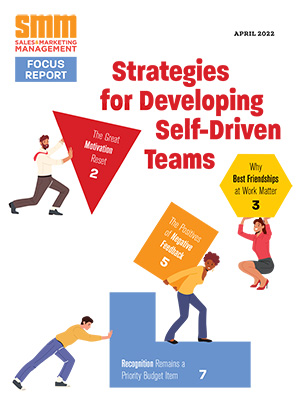What if you could change one simple thing about your message, pitch or presentation to make it more persuasive? What if one basic technique could convince your prospect that the change you’re proposing is superior to the status quo?
According to fresh research from my company, that technique exists. If you take advantage of it, you stand to significantly improve your chances of convincing prospects to accept the idea of doing something different.
Working with Zakary Tormala, a Stanford Graduate School of Business professor, I wanted to measure the effectiveness of a messaging technique at convincing prospects to leave their current situation and do something different. Specifically, we wanted to test the persuasive impact of messaging, pitches or presentations that establish contrast between a prospect’s current state and a proposed future state.
Would highlighting key differences between a desirable future state, such as product features and benefits, and an unsatisfactory present state make a statistical difference in influencing buying decisions? Could contrast — as opposed to presenting future-state information alone — soften a prospect’s resistance to change and make doing something new more palatable?
To find out, here’s how we set up the experiment.
We told two groups of participants to imagine they had their current smartphones for about a year and were reading information about a new phone option. Before viewing the information, participants were told they would receive information about the new smartphone’s features and benefits, beginning on the following page.
The participants didn’t know that before the study, they were randomly assigned to two different presentation conditions. The conditions differed in the presence and location of information highlighting issues with their current phones.
The first group viewed the non-contrast condition (future benefits only), in which participants received a list of four new smartphone features and benefits. Participants were exposed to no other information.
The second group viewed a contrast condition (current issues vs. future benefits). They received the exact same feature and benefits list for the new phone, but next to it, they received a list of four issues or problems associated with their current phones that correlated to each of the features and benefits.
Which condition fared the best?
Although all participants received the same information about the new smartphone’s features and benefits, the study revealed this information was more powerful and persuasive when presented in direct contrast to the disadvantages of the current smartphones.
The contrast condition outperformed the future benefits-only presentation by a statistically significant margin across several areas:
• Purchase intent – Contrast condition participants reported more interest in and a higher likelihood of purchasing the new smartphone. On average, this condition creates more than a 14+ percent boost in purchase intent.
• Willingness to change – Contrast condition participants reported more favorable attitudes toward the new phone and a greater willingness to switch to it — and even pay more — by a margin of 14+ percent.
• Advocacy – Comparative condition participants were 12+ percent more likely than future state-only participants to share information about the new smartphone and recommend it to others.
• Perception of quality – Comparative condition participants believed the new smartphone to have higher quality, be more innovative and stand as a more marked improvement over their current phones. In these areas, the contrast conditions outperformed the future state-only scenario by a margin of 13+ percent.
The results were further validated by additional tests in which we measured two other contrast conditions (putting information on different screens or in various positions on the screen) against the future state-only presentation. In both cases, the comparative conditions outperformed the future state-only presentations by the same statistical degrees across the areas above.
The implication from this experiment is clear: Contrast has the power to persuade. To defeat your prospect’s status quo situation, you need to tell a story that draws a sharp distinction between the struggles of where your prospect is today and what can be gained by switching to you.
Tim Riesterer is the chief strategy and marketing officer for Corporate Visions and co-author of “Three Value Conversations.”


